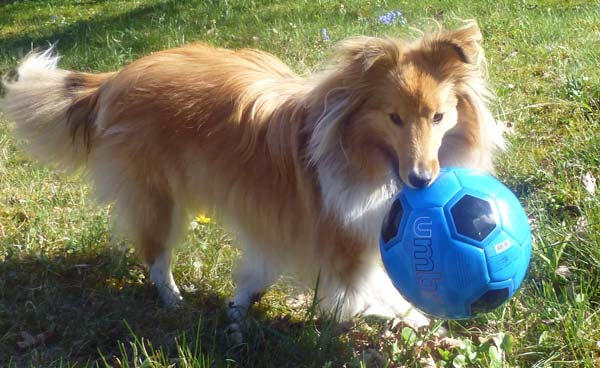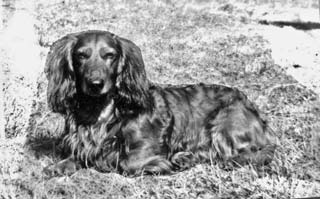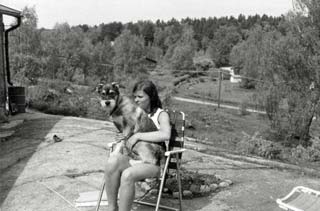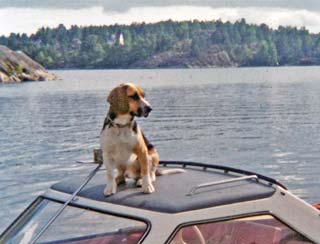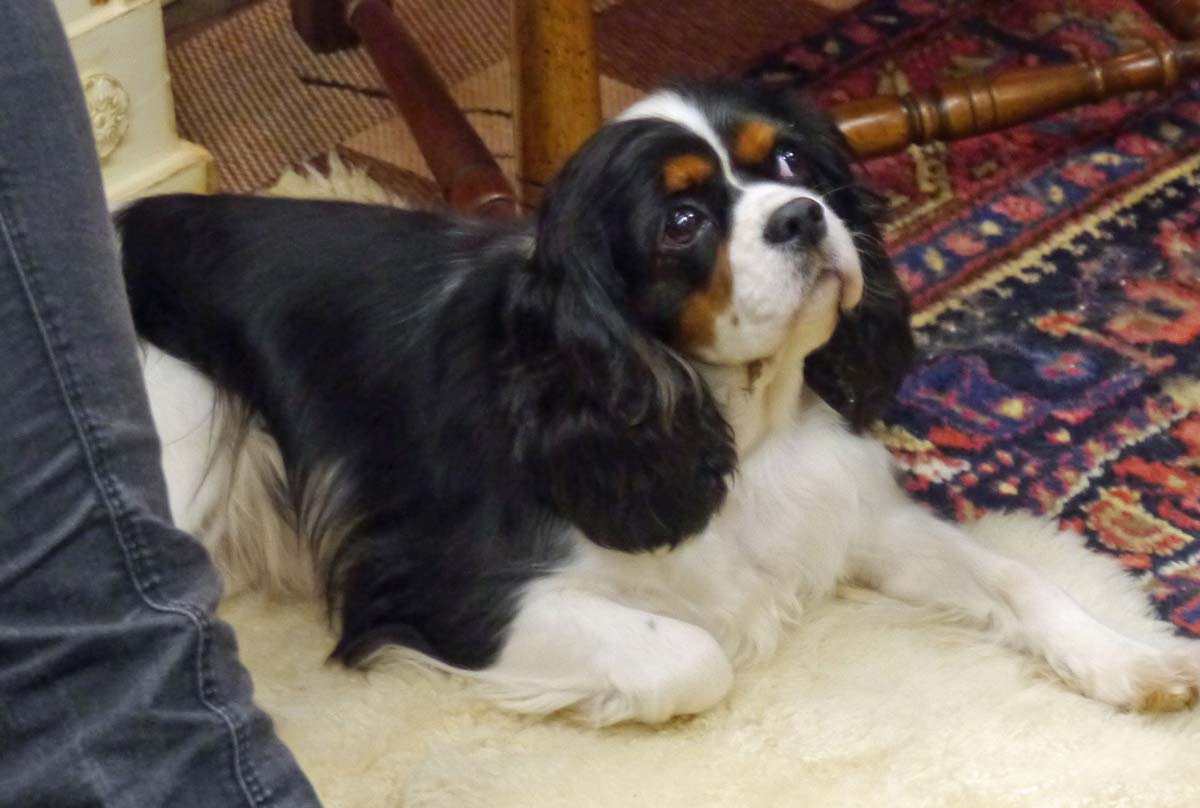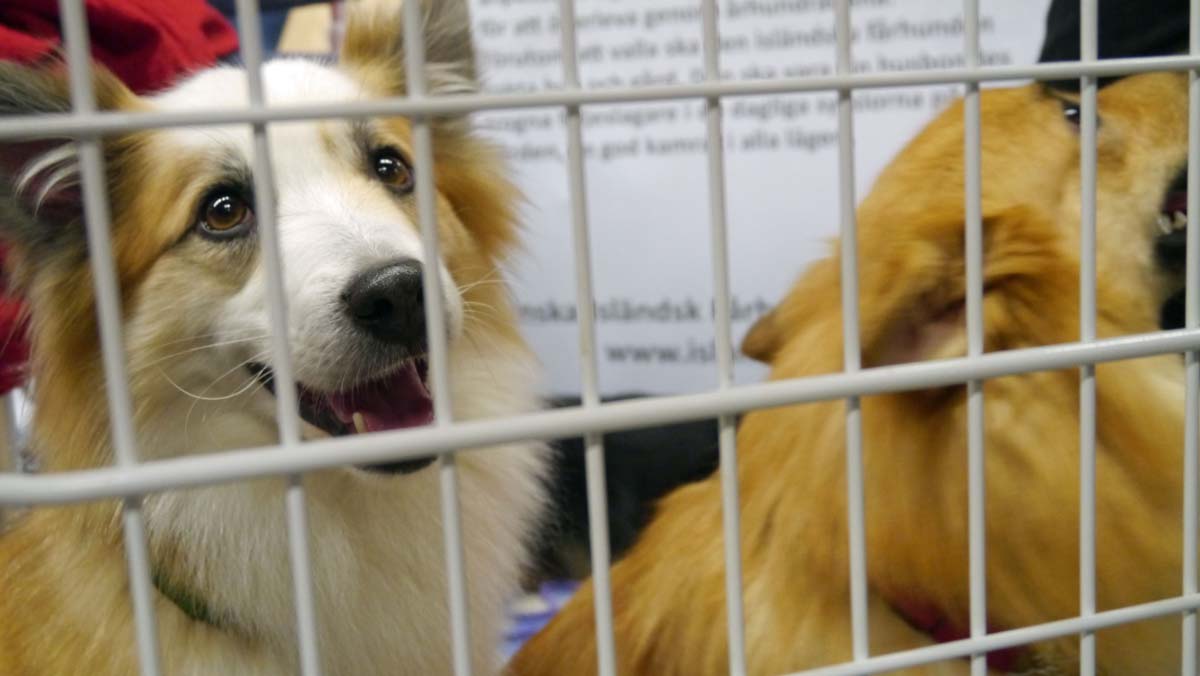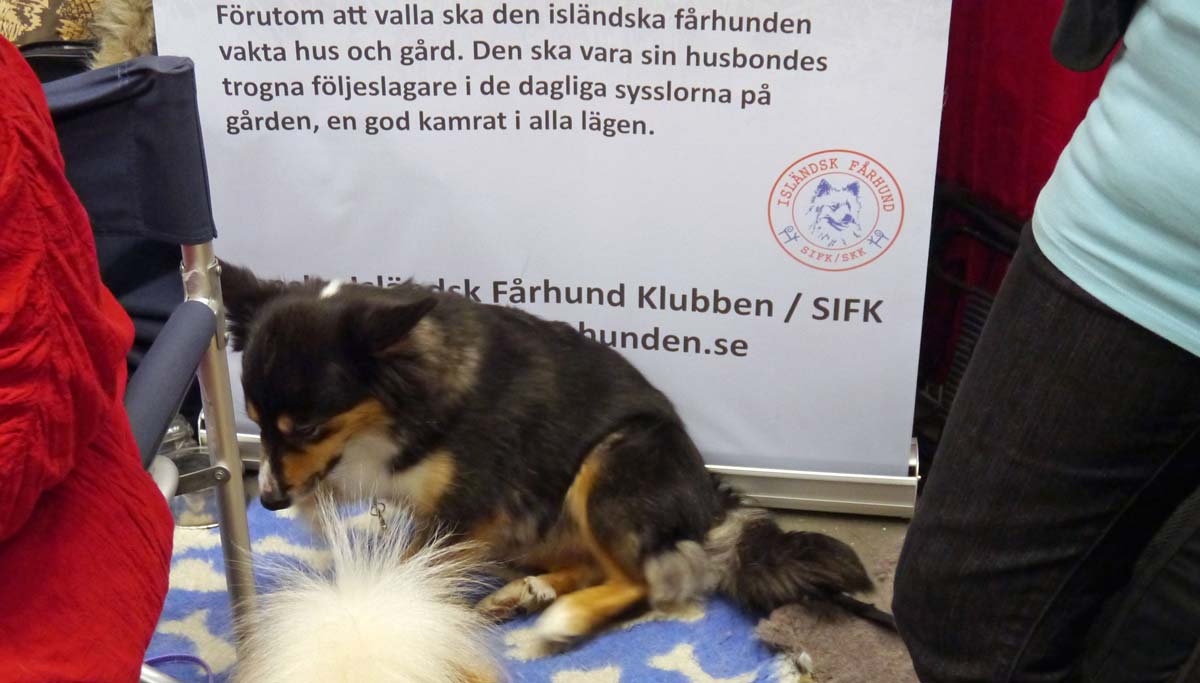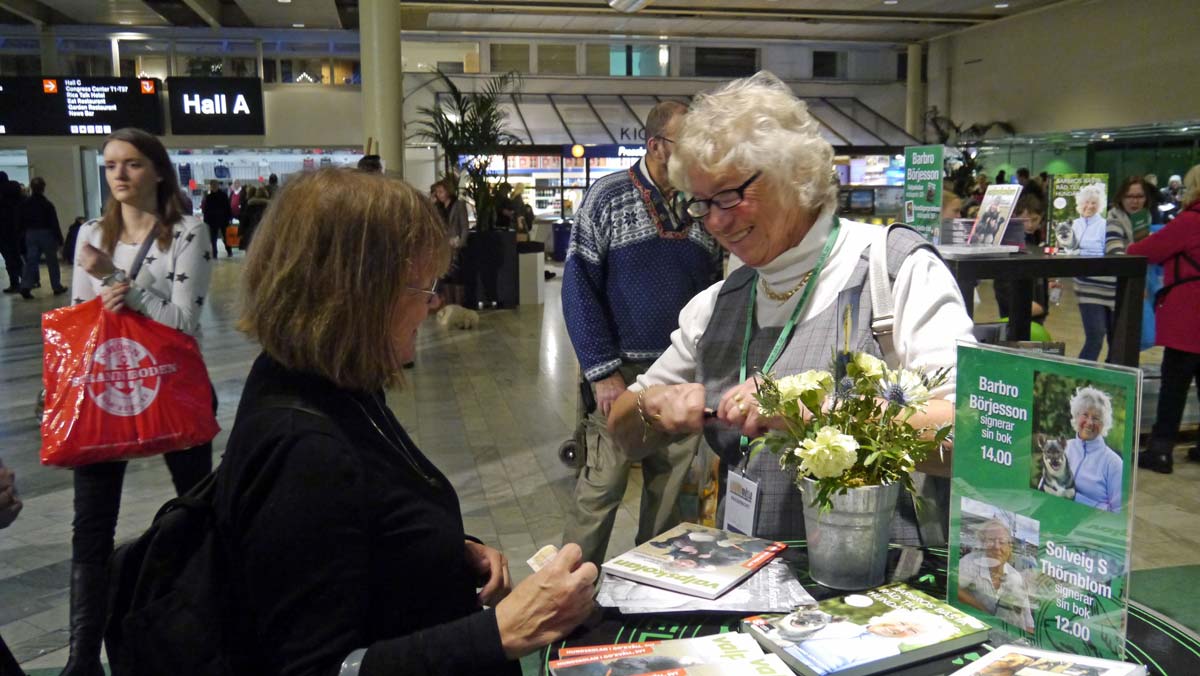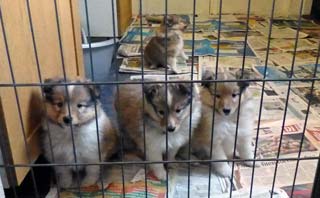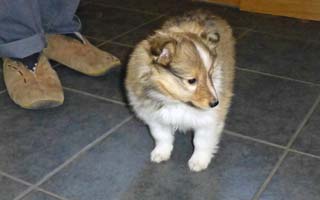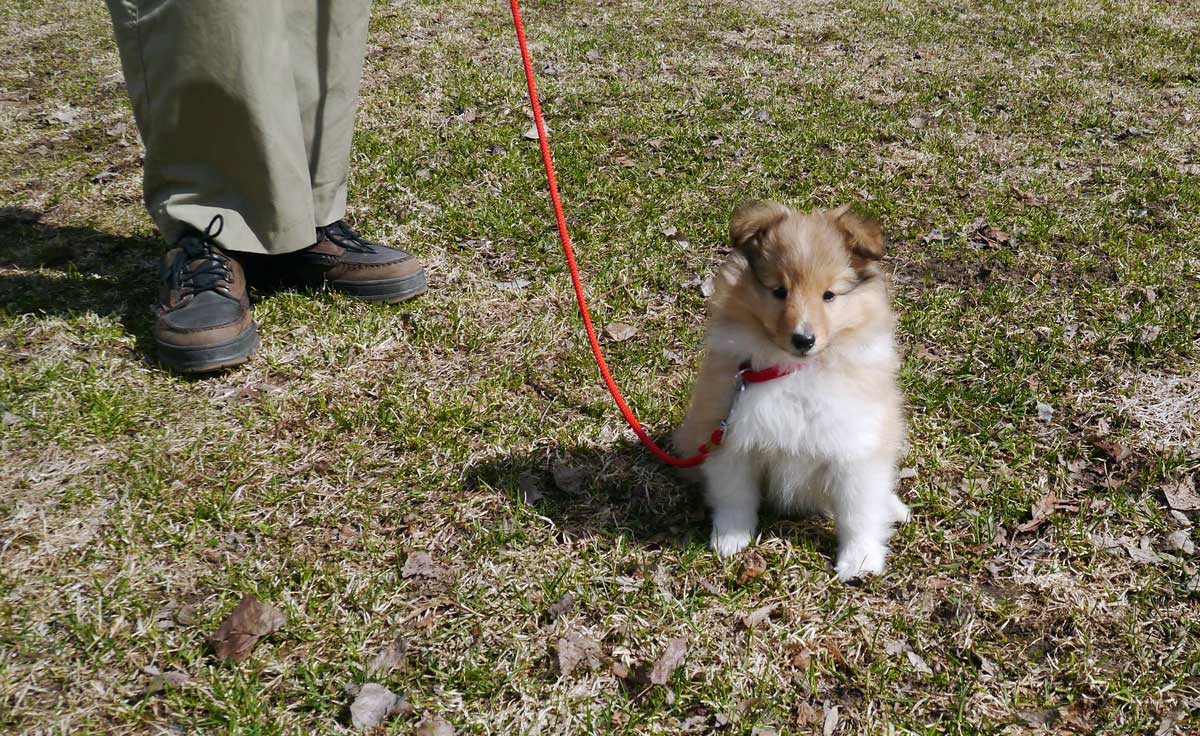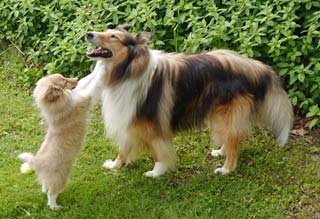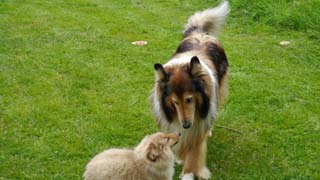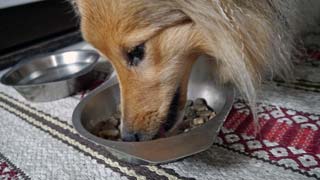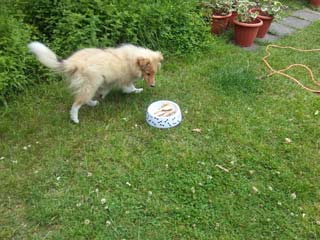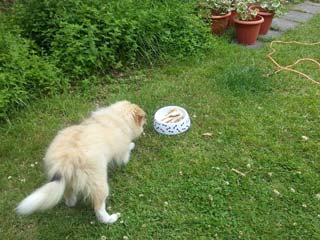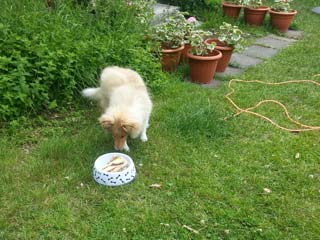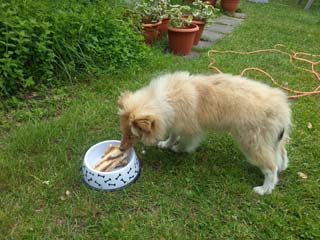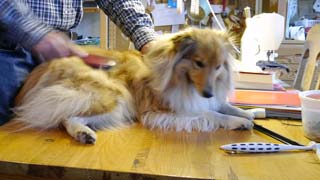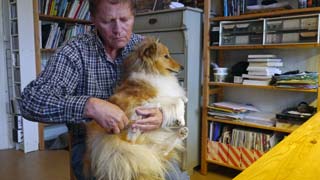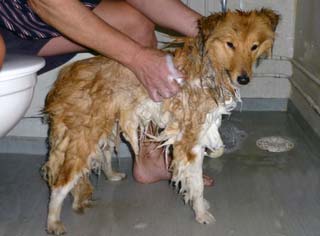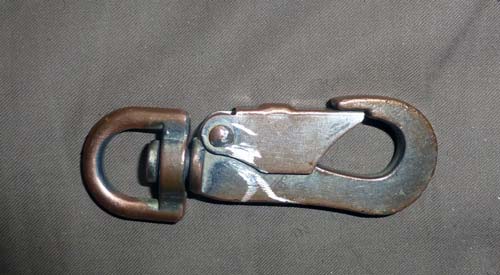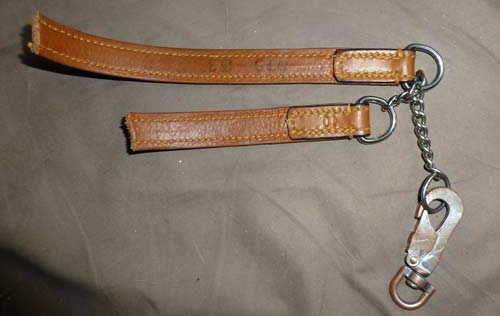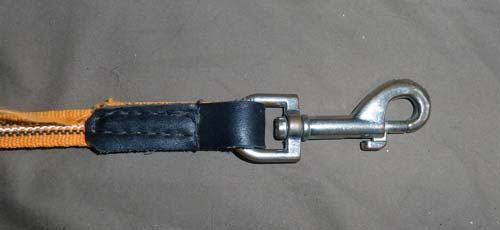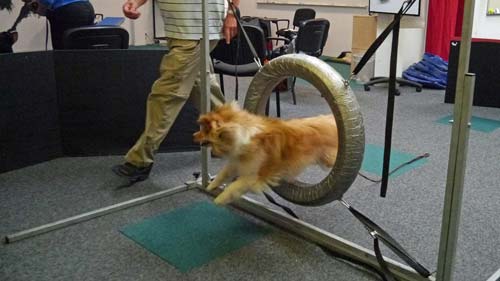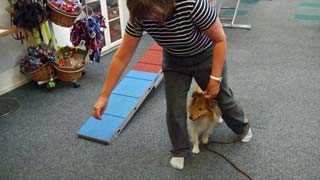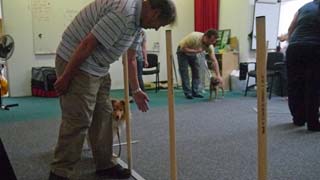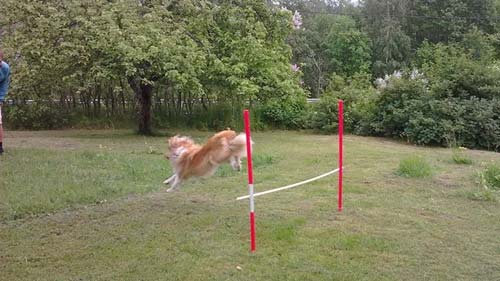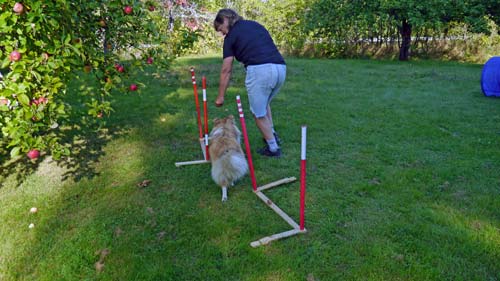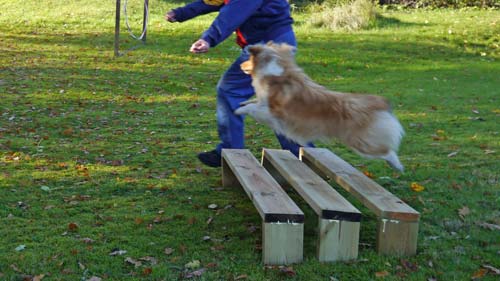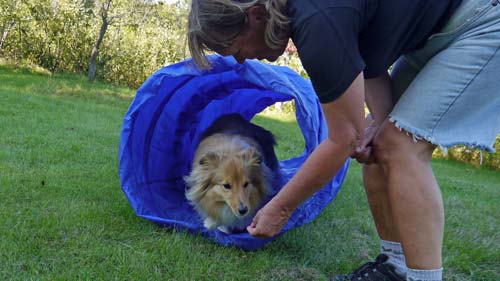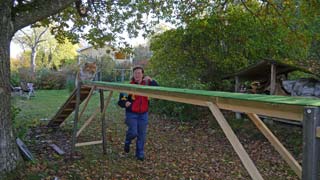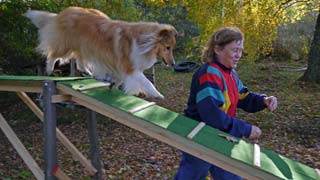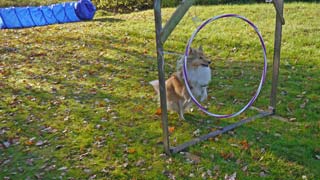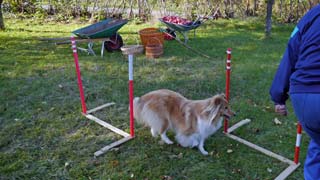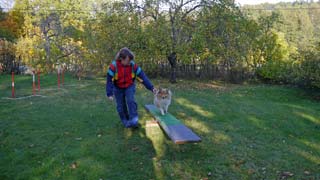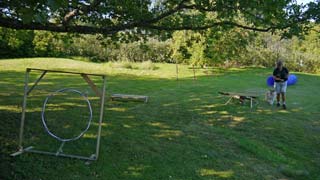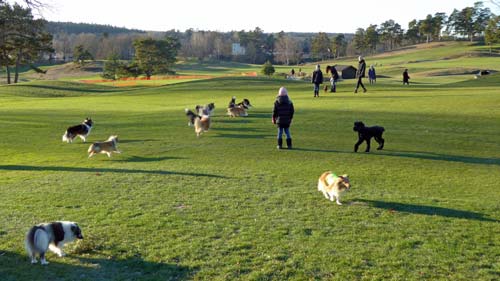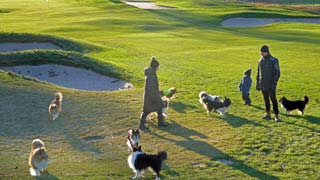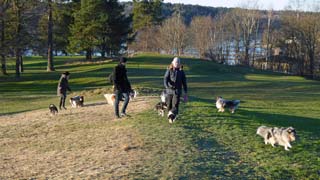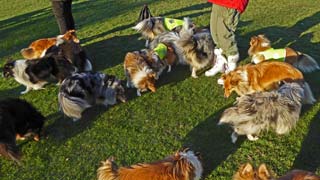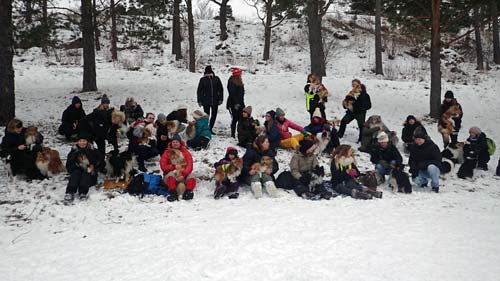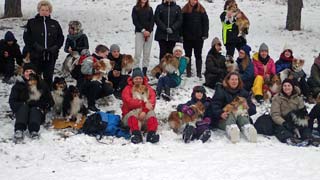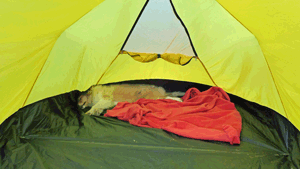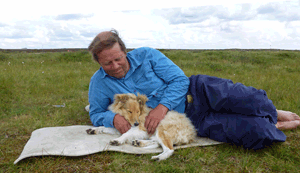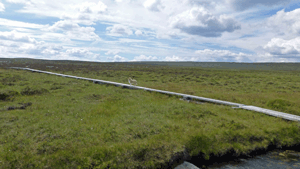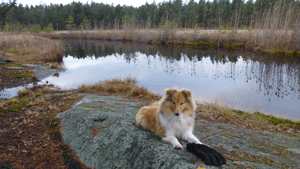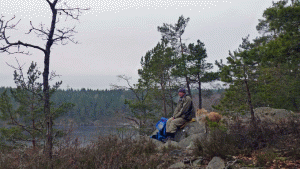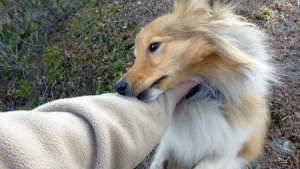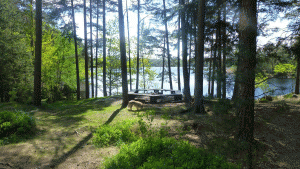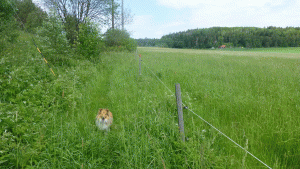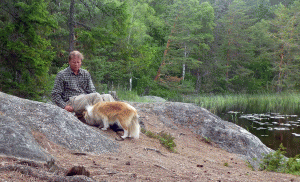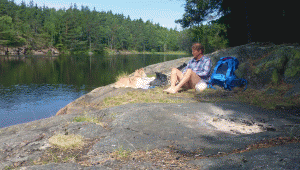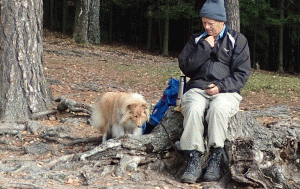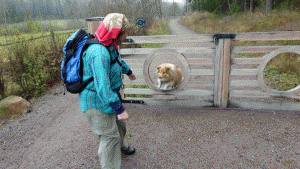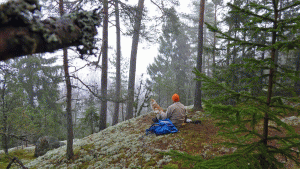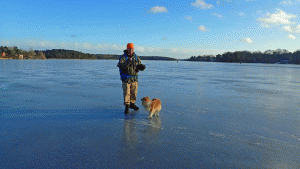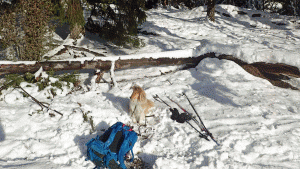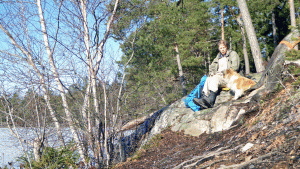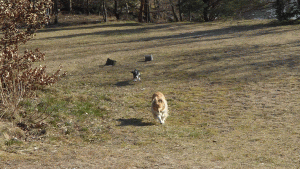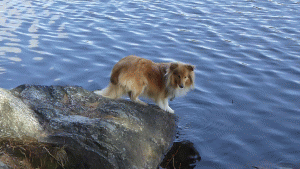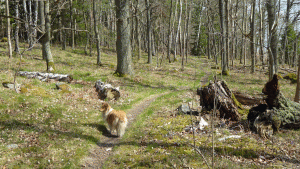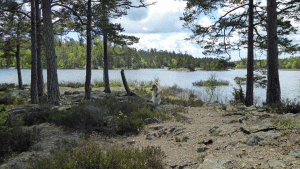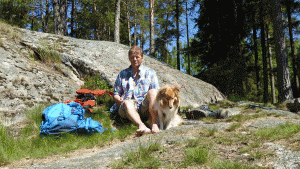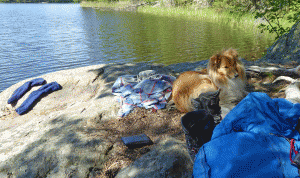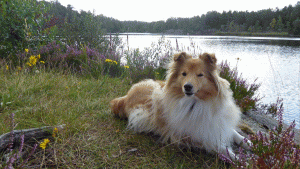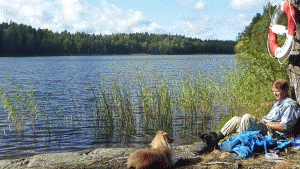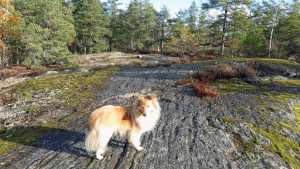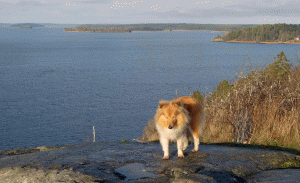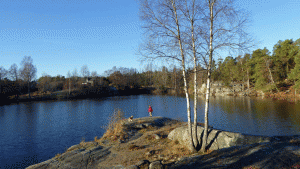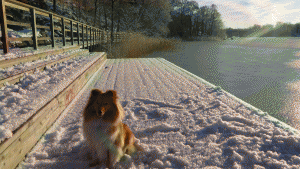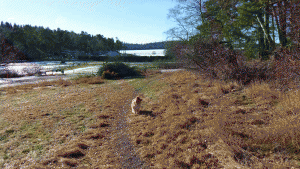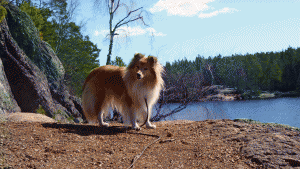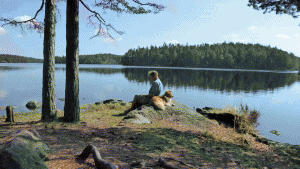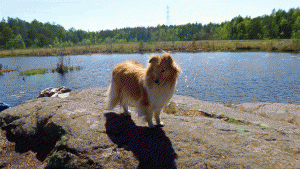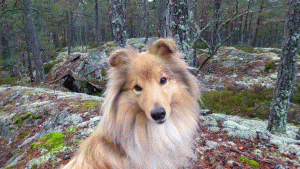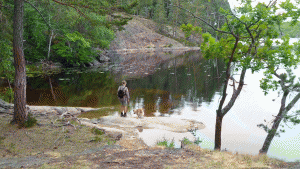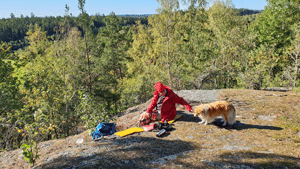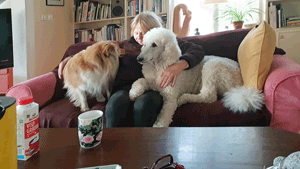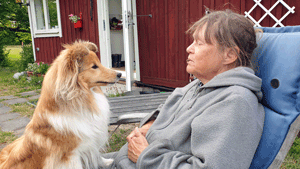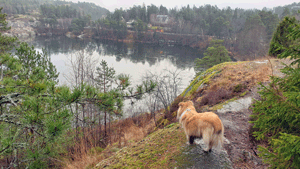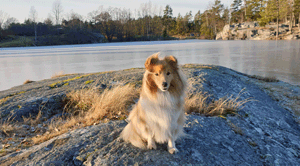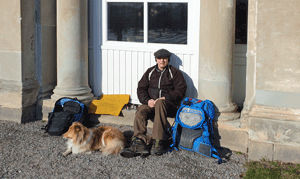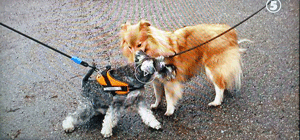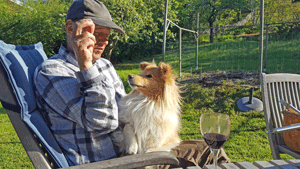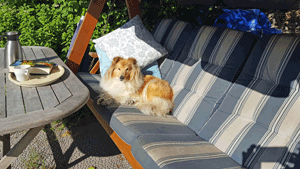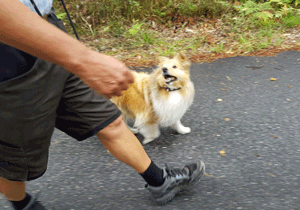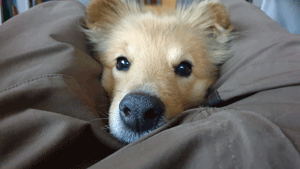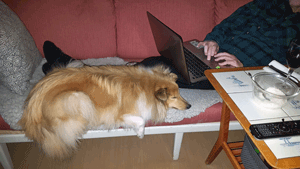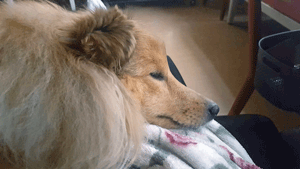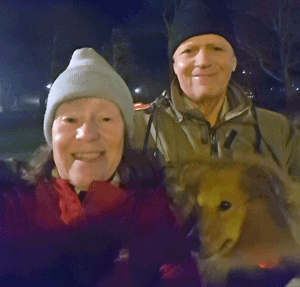Site index
About
Dance calendar
Dance courses
Noticeboard
Dance reports
Techniques
Improvisation
Schottishe
Hambo
Waltz
Snoa & Polka
Mazurka
Polskor
Modern Dance
Other
Links
..Courses
..Festivals
..Other
History
Blog
Outdoors
..Reports
..Walk Guide
..Mountain walks
Dogs
..Lava
Preferences
Login
Contact
Get and own a dog
The story about our Shetland Sheepdog Lava
Contents
| Title | Date | Updated |
|---|---|---|
| Three years with Lava | Mar 5 2017 | Jan 16, 2024 |
| Our middle age doggie | May 8 2020 | Jan 16, 2024 |
| Choice of breed | May 10 2014 | |
| Risks | Jun 10 2022 | Jan 16, 2024 |
| Getting the puppy housetrained | May 30 2014 | Jan 16, 2024 |
| Sheltie get-together | Jan 4 2015 | Jan 16, 2024 |
| Diseases | Jun 10 2022 | |
| Lava at hospital | Jul 15 2014 | |
| Social training | Jun 20 2014 | Jan 16, 2024 |
| When the puppy arrives | May 20 2014 | |
| Puppy course | May 31 2014 | |
| Dog food | Sep 25 2014 | |
| Accidents & Incidents | Jun 23 2014 | Jan 16, 2024 |
| Building an agility track | Dec 27 2014 | Jan 16, 2024 |
| Agility Basic Course | Nov 28 2014 | Jan 16, 2024 |
| Dog owner´s responsibility | Feb 19 2021 | |
| Getting a dog | May 2 2014 | Jan 16, 2024 |
| Contents | Jan 16, 2024 | |
| Leaving the dog alone | May 25 2014 | Jan 16, 2024 |
| Lava stubbing out | Jun 1 2014 | |
| Abstract | May 2 2014 | Jan 16, 2024 |
| Puppy purchase | May 13 2014 | |
| Dog Care | Oct 15 2014 | Jan 16, 2024 |
| The first puppy months | May 30 2014 |
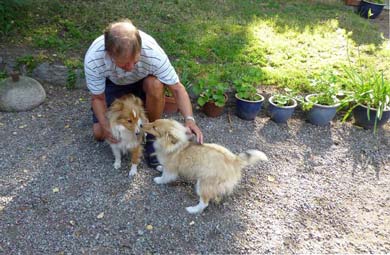
July 23, 2013 - Dear reunion - Lava on a return visit to the kennel where she was born, and visits her mother
- See also Outdoors walk guide and reports
Abstract (May 2 2014)
At the end of April 2013, we picked up an eight-week-old puppy of the Shetland Sheepdog breed, often abbreviated to Sheltie. It is not uncommon for those who do not know the correct name of the breed to classify it as a minicollie.
Below follows lessons and experiences from our dog ownership, from thoughts prior to the decision to get a dog, and what then followed. This includes how to choose breed, purchase, treatment of the puppy, risks such as diseases, accidents and responsibility, a little about agility, and some tips and events.
Hopefully this page can bring about both the demands and the helth and joy that a dog will bring to it's owner.
This page is intended to be updated throughout the dog's lifetime.
Getting a dog (May 2 2014)
During my childhood and adolescence, we had three dogs. The first one was a lovely long-haired dachshund, whose full name was Jansjöborgs Uttz. But we called him Utti. We got him when he was a few years old, and by then the dog was already raised and knew many commands. This was our most intelligent dog, it managed even quite complicated commands, such as 'go home', 'find mom' and more. Its ability to track, search and find his favorite object - thrown stones - was formidable. Utti was incredibly stubborn, and also very systematic in his search. He did not give up until the stone was found, and almost always succeeded even though our tricks to fool him became more and more advanced. Utti died of old age in my arms in a cottage in Västmanland during a sports holiday, and the pain of the loss was considerable.
After that we had two more dogs. The first one was a mixed breed that we got as a puppy, and where we not took care of our job of raising the dog. He became a lively and happy medium-sized dog, but a big bully.
The third dog was mostly taken care of by my dad, he wanted a hunting dog. He acquired a beagle, a very easygoing and nice dog.
However, when that dog sniffed animal tracks out in the woods, he showed that he was a hunting dog, and had to be kept on a leash.
After this, there was a long break from my contact with dogs. School and professional life came in between. But because I have always been interested in outdoors activities, the idea has been that at retirement, my ability to take care of a dog might have improved. At that time possibly I could consider to get a dog again.
When the time for retirement was approaching, it was time to raise this issue again. I started by buying and reading a number of dog books. Because the question had been around for so long, the primary question about whether I was willing to take responsibility for a dog, had already matured.
But if you yourself are thinking of getting a dog and have not had a dog before, then it is important to investigate carefully if you are willing to devote the time and commitment that a dog requires. If you do not have it and you still want pets there are less demanding ones, such as cats or aquarium fish. At the same time, my experience is that the dog becomes a faithful friend and a family member in much higher degree than other pets. So if you are willing to give the dog the time and attention required, you also get a lot more back.
Lava is the first dog where the full responsibility for the dog's care and upbringing lies with us. And because at that time my wife was still working on weekdays, a lot of that landed on my shoulders.
Take the time to think through the decision to get a dog. Read about our experiences below, and get some dog books. There are also many other sites online that you can visit.
Requirements - Time and Presence
The dog is a herd animal. For a family dog, the family is its herd, she does not want to be left alone.
With purposeful training, the dog can eventually be left alone for a limited time, but it is probably wise to expect that until the dog is four months old, a person should be constantly present. The training of being alone can be initated during that time, but in a so small extent that you can not really leave the dog. During the first year, you can then gradually increase the time away to maybe one or two hours. After another year or so, it might be possible to leave the dog for four hours. I think you should never leave the dog alone much longer than that. Tips on how we trained Lava follows in later chapters.
The dog needs rest and exercise. Larger dogs have greater stride length and are often faster, which is why they also need more exercise, albeit with variation for different breeds.
Expect that in adulthood the dog needs three proper rest walks, morning, afternoon and evening. If you go for a long day walk, two walks might be enough. For those away for work, a dog daycare may be needed.
The dog also needs care - toothbrushing once a day, fur care (different between different breeds), claw trimming every fortnight, food and possibly medical assistance in case of any illness.
Requirements - Cost
A purebred dog can cost a lot to buy. Then there is insurance, annual vaccination, food (varies with the size of the dog), leash, necklace / harness, possibly courses and/or a cage for the car, rest bed, etc .. In case of any illnesses that require veterinary care the insurance covers only part of the cost, and own costs can be significant in the event of surgery or hospital care. If you can not manage fur care and claw trimming yourself, costs for this can be added. For those away from home for work, there are often additional costs for dog daycare.
It should be possible to find information online of typical annual costs for the dog.
After studying this, if you come to the conclusion that you are ready to set aside the time and commitment needed, then it's time to move on to the next step, namely what qualities you want your dog to have.
Choice of breed (May 10 2014)
I started by making a list of the characteristics I wanted for the dog, with intent to be able to compare these with the described characteristics of different dog breeds.
This list was partly based on youth experiences. But of course I was at the same time aware that the ideal dog does not exist, that the individual characteristics within a breed can often be great, and that the dog owner's training of the dog is at least as important as innate traits.
This is what my wish list looked like:
- The dog breed should, as far as possible, be a healthy breed without more serious racial diseases
- The dog must arrive immediately and without reservation when summoned, regardless of external circumstances
- The dog must be able to be kept unleashed without problems, in forests and other contexts, with full control maintained. Minimal hunting desire
- The dog should have minimal guarding skills. We do not need a watchdog, and a barking dog when people pass by is not fun
- The dog should never rush towards strangers, whether it's just for greeting
- The dog should not be predisposed for barking, preferably never bark except on command
- The dog must maintain full-day walks in the forest, about 25 kilometers, and also mountain hiking
- The dog should be able to follow a skier 25 kilometers in a full day cross skiing event
- The dog must cope with a full day outdoors hike in Swedish climate, +25 to -10 degrees
- The dog should be able to occasionally be alone for a whole evening about 4 hours
- The dog should be able to and like socialize with other dogs without any problems
- The dog should be well receptive to obedience training
- The dog should be nice, kind and cuddly
- The dog should not be larger than necessary
Using this list as a reference, we then went through the descriptions of different dog breeds. Among the dogs considered was in addition to Shetland Sheepdog e.g. Cavalier King Charles, miniature schnauzer, poodle, Icelandic sheepdog and Danish-Swedish farm dog.
When we thus got a list of interesting dog breeds, we went to the dog fair in Älvsjö to talk to dog owners and look at the different dogs.
At the end of this process, we had selected the breed that we thought best matched our wish list. The choice fell on Shetland Sheepdog, and the trait we then primarily experienced as a problem in relation to the wish list was the barking.
Among the other candidates, there were various reasons that decided. For Cavalier King Charles, it was mainly health reasons, but also that the owner at the fair was hesitant that the dog would manage a ski trip of 25 km. We refrained from Koiker-hundje because it seemed to require a consistent upbringing, something we perceived as a warning signal. The Iceland sheepdog was a strong candidate, but at the end the barking made us not to choose it. We read different reviews about the poodle, but in a few books we found some warnings for that breed. Later on our dog walks, I have however been impressed by the poodle's playfulness and intelligence, and think that the poodle had also been a very good choice.
However, the Shetland Sheepdog was our winner. When the choice of breed was ready, it was time to find a kennel within a reasonable distance that had puppies in progress. For a while we thought it would take a long time before we found someone, but after only a few weeks we found an ad from Windcrest in Täby. And thereby this section was completed, and it was time to focus on choosing puppy and buying.
Puppy purchase (May 13 2014)
When we read in books about buying dogs, we were advised to visit several breeders to find out who we trusted, and also to get to know the puppy's mother and preferably also the father.
We found these advices difficult to follow. A lot of travel, often long distances, would be needed, and I am not sure breeders are that interested of having visitors that come for other reasons than looking for a dog to buy.
I also felt doubtful about my ability to determine the quality of a dog based on only one short visit. So we were from the beginning focused on that if we found a suitable puppy and nothing came up that spoke against, then we were ready to buy.
We booked a visit to the breeder. She had four puppies of which two were already tinged. I had heard before an advice that you should try to avoid both the most perky and the most careful puppy, and rather choose someone in the middle of the crowd playing with their siblings.
The place we visited was small, a villa where one part was divided for dogs. Of the two puppies that were available to us, one was withdrawn and cautious, while the other seemed more independent. The two puppies that were already tinged were the ones who played with each other the most.
We asked for a couple of days to think, but then called back the same evening and confirmed that we had decided that we wanted to buy the more independent of the two remaining puppies. Her name was Blond Ambition. After a few days of discussion about which name we wanted, we decided on her new name - Lava!
When the puppy arrives (May 20 2014)
At six weeks of age, we saw Lava for the first time, and at eight and a half weeks we picked her up. We had prepared before by going through the apartment and remove things that we judged to be inappropriate rodent objects, e.g. lying power cords on the floor. We had also gone on a little shopping tour and bought a couple of toys, leash and necklace, poop bags and a blanket for a cardboard box that we furnished as her first sleeping bed.
When getting the puppy, the breeder gave us a small bag of food that lasted for about a week. A first action when we got home was to order more food of the same kind. More about food will be described later.
When Lava first entered the apartment, we already knew her experience outside the breeder's villa was minimal. She had been to the vet for the first time vaccination, and also been out once just outside the house where she was born. So the journey from the kennel in Täby and into Stockholm was a trip out into the big world for her. We had borrowed a car so SL's bus and metro would not have to be her first contact with the big world. The journey home in the car went excellently, and so we finally got to experience the exciting moment when she landed in her new home.
We dropped her off in the middle of the bedroom, and then sat on the floor and let her explore its new surroundings. And she did! Among other things, she quickly discovered that the new floor was slippery, but we could not do much about that. We thought it felt good that she just seemed curious, not worried or scared. It was no problem to get her to play a little. Watch the charming video when she is playing below!
We had got a small blanket from the breeder so she would feel a familiar smell in our home. We began with giving her food, which she ate with good appetite. And thus we were already in the puppy era recurring theme - play, food, nature needs and sleep.
The first puppy months (May 30 2014)
We were aware that the puppy would need constant supervision during his first period. The first days both Ellika and I were free. After that it was me who, as an occupational pensioner, took care of the supervision during weekdays.
Although I had mentally realized that the puppy needed supervision all the time, I had not really taken to myself the full meaning of never being able to leave the puppy. Previously I had been physically active - at least one full day-long walk a week, jogging at least a couple of times a week, cycling daily, dancing about one night a week and more.
With the new puppy, a walk around the block could easily take one hour. The walk almost always began with Lava parking herself on the sidewalk directly outside the gate, and there she lay, watching with wide eyes just about everything. A car that passed - very exciting. A person who comes walking - must be observed from what he / she appeared until disappering again. In the same spirit, the walk continued. Everlasting stops, requring a lot of patience.
We were aware that the puppy would need constant supervision during his first period. The first days both Ellika and I were free. After that it was me who, as an occupational pensioner, took care of the supervision during weekdays.
Although I had mentally realized that the puppy needed supervision all the time, I had not really taken to myself the full meaning of never being able to leave the puppy. Previously I had been physically active - at least one full day-long walk a week, jogging at least a couple of times a week, cycling daily, dancing about one night a week and more.
With the new puppy, a walk around the block could easily take one hour. The walk almost always began with Lava parking herself on the sidewalk directly outside the gate, and there she lay, watching with wide eyes just about everything. A car that passed - very exciting. A person who comes walking - must be observed from what he / she appeared until disappering again. In the same spirit, the walk continued. Everlasting stops, requring a lot of patience.
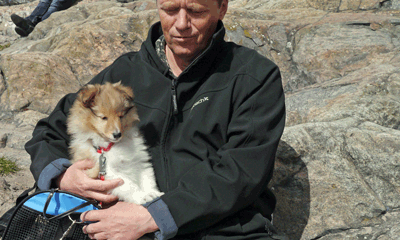
Walk with our sheltie Lava during the first puppy period. Plenty of patience, time and a carrying case were needed
After a few weeks with these new habits, when whe went for a walk it felt like it was crawling in my legs. It also felt quite difficult to never be able to go outdooors for even the smallest matter.
It took a long time before I thought it felt like I could take a quick turn to the grocery store and buy something. I still remember the relief it felt like when I first felt I could walk away one quarter to throw away some garbage and buy something at the nearest grocery store.
Under such conditions, it was often a big relief when Ellika came home from work, and shared the burden of always having to take care of Lava.
Getting the puppy housetrained (May 30 2014)
We had read a lot about housetraining, and were aware it would take some time before Lava was room clean. We followed well-meaning advice to place widespread newspapers in strategic places in the apartment, e.g. at the door. But in retrospect it feels like they did no good.
For a long time, Lava avoided peeing and pooping outdoors. Instead, it was the first thing she did when she got back to the apartment. She choose a couple of corners in the apartment as her toilet seats, and she always ran to there as soon as she came in again, and also when she otherwise needed to.
One concern in the beginning was that she liked to eat poop. Not only her own, but also other dogs when we were outdoors, not to mention human poops. However, this behavior disappeared after a while without us doing anything, although it took a little longer for the human poops.
We tried to follow the advice to always take her out after food and play, but mostly in the beginning she avoided doing her toilet needs until she came home. As she grow, she gradually started to pee and poop more often when she was out, and at exactly four months of age, she voluntarily stopped peeing and pooping inside.
Our impression is that this is about maturity and size of the intestine and bladder in the dog. I now believe that you simply have to wait for the dog to grow, and until then it's just to dry up inside. After all, it is not a particularly burdensome task, except of course for when she does her needs in the middle of night and you need to get up even though you slept so well.
Leaving the dog alone (May 25 2014)
A dog never likes to be left alone. Eventually this can become a trauma for both the dog and its owner.
However, a distinction must be made between leaving the dog alone and leaving it undisturbed. Dogs also need their private and safe zoon, where it can retreat and relax. The place could be the dog bed, the floor under the bed or a corner.
However, when the dog is left completely alone at home, it can become very anxious. This can also lead to the dog howling and becoming destructive.
I am not a dog psychologist, but I think that if it goes so far that it has become a trauma for the dog, it can be much more difficult to remedy it, compared to making sure from the beginning that the dog is never exposed to such prolonged loneliness that it turns into a trauma.
If I'm right, you should very slowly get the dog used to loneliness, and always take the safe for the unsafe and do not push the boundaries of what the dog can endure.
Here's what we did:
Already during the later puppy period, perhaps from about three months of age, the dog was left in the bedroom with a lattice to the rest of the apartment, preferably when it wanted to sleep. If she showed that she wanted to come out to us, she got it, but we strived for that she would be able to stay also when she was awake.
We also tried to convey that the hall was not Lava's area, so as not to trigger frustration when someone left home.
When it was finally time to try to leave home, it was initially only for a few seconds, with Lava still left in the bedroom with the grille facing the apartment. We always left without saying goodbye to the dog, and also delayed greeting the dog when we returned. The idea with this was that the dog would experience that there was nothing to worry about when we came and went.
Soon we extended the period to a few minutes, and then a quarter of an hour. When the periods got longer we also prepared a dog biscuit in a crumpled blank paper roll, so she got something fun to work with when we left the apartment.
One problem is that it is not possible to observe the dog after leaving the apartment. On a few occasions we left therefore a mobile phone with the audio recording on, and then listened to if she was silent during the absence. The first time we did this she whined a little at one point, but during later recordings she was completely silent.
Occasionally we now leave her alone for four hours, and she seems calm when we return. Perhaps we could be away a little longer, but at the same time we do not want to leave her alone longer than necessary.
Puppy course (May 31 2014)
We had originally planned to participate in a puppy course. Because summer came in between, this did not happen until Lava was about six months old.
We found a puppy course on weekday evenings in the Hammarby lake town. The autumn darkness became more and more reminiscent during the course, and at least one of the courses was completed in heavy rain.
I have afterwards received a couple of questions from other dog owners with puppies if you need a puppy course. I have not been able to answer for their part - it depends, among other things, on their own prior knowledge. But I have answered that at least for us, the course was of great value.
On the course, great emphasis was aimed at positive rewards, to make the dog really want to do the right thing. Aids here can of course be pieces of goodies. 'Find what the dog is passionate about!' But also closeness and praise, to be able to make the dog relax, to take it easy. Clicks were mentioned as a very good tool, however we had already started using that before the course.
During the course, we also practiced several of the behaviors that are needed for you to have a nice time with your dog. Examples of this are meeting other dogs, summoning, stopping, staying, walking nicely on a leash and more. We also got several good and useful tips on good training methods for these.
We also practiced prohibition commands, but the focus was on positive rewards.
I once heard a little story about a dog owner who brought his puppy to the first lesson of the puppy course: He approached the instructor and said:
- Here's the puppy! Is it okay if I come back and fetch the dog in an hour and a half?
I'm assuming it was a joke. It is the dog's driver who takes the course, the puppy is the one we train on. But at the same time, I feel that the course is a useful experience with social training for the puppy. The course will give good opportunities to practice that the dog concentrates on its handler despite other puppies distracting with playfulness in a close environment.
Social training (Jun 20 2014)
The Shetland Sheepdog is described as a soft and gentle dog, where sometimes the dog may be reserved or even afraid of other people. In contact with other dogs the sheltie is usually hassle free.
We also read in books that you should not let the dog greet every dog, rather let her play with only some selected comrades. The cause was said to be partly medical - dogs can be infected with diseases just like us humans. The other reason given was that it should be stressful for the dog to constantly getting acquainted with new dogs.
For our part, we strictly refrained from contact with other dogs until the second vaccination at the age of twelve weeks. Lava has always been interested in greeting and preferably playing with other dogs, so a leash has long been required when interrupting the play. On occasion, we have also lifted her up when other stray dogs showed too much presumptuousness.
After the vaccination, my sister's collie was one of the first dogs Lava got to visit. Lava was very happy and interested, but the old collie was not as interested. It was amusing to see how Lava seemed to imitate the collie, for example when the collie laid down Lava also laid down in the same posture.
Gradually, there have been many dog meetings, and they have always gone well. Lava is definitely interested in playing with most dogs, but is careful and sometimes reserved when meeting larger dogs. She has learned that even if they are playful and kind, they have a power and weight that can make the contact with them too harsh. She always wants to play with dogs of the same size, although she does not always manage to get the other dogs as interested. Her favorite game is to run around in large circles with other dogs.
However, if dogs bark and quarrel, she keeps her distance.
Still at the age of fifteen months, it is sometimes difficult to prevent Lava from sniffing on other dogs if she is unleashed. Once she has done so, however, it is usually possible to call her in, albeit sometimes a little reluctantly.
When meeting people, Lava is usually spirited. I usually say that she is just as fond of greeting other dog owners as their dogs. When other dog owners call for their dogs, it is common for Lava to be the first one to arrive. Not seldom she also manages to get both a pat and a treat from the dog owner.
So far, it has never felt like our sheltie is too scared or cautious.
Dog food (Sep 25 2014)
The Shetland Sheepdog is said to be very fond of food, and that the dog owner must make sure the dog does not eat too much. This advice should be superfluous, but unfortunately obese dogs of all breeds are not uncommon, with the same sequelae as we suffer from - sluggishness, joint diseases, diabetes and more.
However, this did not feel like a problem for us, because as a dog owner, you have control over the muchness of food for the dog. So the problem seemed to be easily solved by proper dosage.
When we got the puppy, we also got with us about a week's need for dog food, consisting of pellets of in this case the lining Precept Plus Junior. The dosage was three decilitres per day divided into first four and later three meals, preferably soaked in water which is poured on boiling and then allowed to cool. The water would make the feed more gentle on the stomach.
When the puppy got older, we would give more food, and eventually switch to two meals a day. However, we did not receive a specific indication of how much the daily dose should be increased.
We have since largely followed this dosage. After a while, Lava no longer wanted to eat soaked food, so then we switched to serving the feed completely dry, or sometimes cooking only a small amount of it. As a little puppy Lava was always very eager when there was a shortage of food, but after a while it almost turned into disinterest. Often she just sniffed at the bowl when she got food, and then left. After a quarter or half an hour she could go back and eat, but often not everything that was in the food bowl.
When we first gave her a marrowbone at the age of four months, she became very confused, and walked around it while barking. After some time she dared to sniff and began licking it.
When Lava grow older, we tried to give four decilitres of dry food instead of three. In practice she rarely ate that amount of food. She seemed to be satisfied with the same amount of food as when she was a puppy. We have checked her hole regularly, and it's felt right all along.
When Lava was taken into hospital for stomach problems in the summer of 2014, she suddenly turned into a food-loving dog, that always eats up all food served. This has meant that we have recently reduced the portions a bit to keep the hole just right, so at present the dose is about 2.5 dl of dry food a day.
In addition to her regular food, she has also got reward sweets, e.g. small pieces of liver slices or tuna. In addition, from about four months of age she has received something extra about once a week, such as a piece of marrowbone, half a throat or a piece of bull muscle. We have always cooked the marrowbone for a about 15 minutes.
The food problem for Lava is instead her constant ability to find something to chew on when she's out. Before we got Lava, I had no idea how much there is to eat in our surroundings. In town there is a lot - half-eaten sausage trays, vomit, half-eaten ice creams, chicken bones and a variety of other indefinable things that Lava suddenly chews on. For a while, poop and chewing tobacco were also on the menu, but fortunately that has passed.
Out in the woods it's better, but only a little. Here, too, man seems to leave much edible behind. The rest areas we pass Lava always examines thoroughly, and it happens she even find chicken bones there. I once found her with a whole barbecue sausage of an unknown age, which she hided in her mouth.
Even at a mountain hike above Grövelsjön, she managed to find interesting food sources. In one place, in the middle of the mountain heather, she suddenly dived away about ten meters, and then stood eagerly and munched. In that case, it was macaroni. A little later about fifty meters from a rest area she found another source. An investigation showed that there was poured dog food in the bush.
The problem with everything she chews outdoors is that she can then ingest a lot of bacteria and other harmful substances, which can cause stomach problems. Chicken bones are dangerous for the dog, but also old food that has been lying and rotten outside can be unhealthy. Sometimes the food might contain substances that humans can eat, but are harmful or toxic to the dog (onions, grapes and raisins, chocolate, etc.)
As far as possible, we try to prevent all food searching outdoors, but the time gap between sniffing and chewing is subtle. So unfortunately this is something we cannot stop totally. So please - all of you who eat outdoors - bring home EVERYTHING that is left after the meal - both rubbish and leftover food! And especially important - do not throw gnawed chicken legs, either in parks or nature! They are dangerous for the dog.
Dog Care (Oct 15 2014)
As a dog owner, care that we are used to giving to ourselves, we now also have to give to the dog. This includes for example toothbrushing, clipping of claws, possible brushing / combing / trimming of fur, looking for ticks, and sometimes pads care after walks. Also a general check of the dog, such as holes, eyes / ears etc. should be included in the routines. By doing so daily, you learn what is normal for the dog, and can easier detect anomalies.
Toothbrushing
We have used the principle that everything that a dog should be able to do in adulthood will be initated in the puppy age. So we started with toothbrushing already in the first puppy stage, even though it was probably not really needed then, as dogs, like us humans, will lose baby teeth pretty soon.
We also buyed an electric toothbrush early, as we on our own teeth have noticed these are significantly more efficient. The electric toothbrush we used initially was a brush head adapted for dog teeth, but we soon concluded that those designed for humans are more effective. So we switched to a such (Braun Oral B) when the first one was worn out, and feel it works perfect for the dog as well.
Lava has never been fond of the electric toothbrush, but she tolerates it. However, I still have to accept that she needs some breathing breaks while brushing, so I brush one row of teeth at a time, and then give her a few seconds break before brushing resumes.
If the dog tooth brushing is ignored, for most dogs rather expensive vet tartar removal will be needed, and not unlikely also later tooth extraction. And also if ignoring the the cost for that, it is not kind to the dog to let her go through her life with a hurting mouth.
Claw trimming
We cut Lavas claws every other week. This is something Lava does not like, and she can even sometimes show her teeth when we do this. A dog showing its teeth is a warning that a bite may come. However, this has so far never happened (except for the incident with the dog-lead fastener ).
Because we know that Lava reacts that way, we are usually two during the cutting, where one cuts while the other calms the dog. It is only during the cutting of the claws on the front legs she reacts, the claws of the back legs usually can be cut without reactions from the dog.
Fur care
Fur care varies from none to daily depending on the dog breed. For some breeds, the fur also needs to be cut or jerked. The Shetland Sheepdog is described as that despite its abundant fur it does not need much fur care. We agree on this. We brush and comb the dog about once a week for about a quarter of an hour.
Due to the abundant fur and the dense bottom fur, tufts are formed quite easily in particularly exposed places, especially behind the ears. We do not manage to comb them out, instead we just cut them off. Lava has so abundant fur that we can see no difference afterwards.
We also trim the fur around the paws, so that the shape of the paws is more clearly visible. Every now and then I also catiously cut some hair between the pads.
One reason to try to get rid of excess fur between the pads may be to try to prevent winter snow gets stuck there and melts together into ice. This seems to be mainly a problem when it is cuddly snow, and where road salt has been used. Ice between the pads can cause abrasions and must therefore be removed as soon as possible. This can be accomplished by warming the dog's paws in your hands, until the ice melts.
Recently, we have begun to use protection for the paws under such conditions. The covers work well and are sold under the name 'Pawz'. They are made of rubber, are easy to apply, and protect the paws from both wear, dirt and lumps of ice.
In winter, with fresh snow around freezing point, it happens that snowballs form that get stuck in her fur. She then tries get rid of them, but it's faster if we help her.
In wet and sloppy conditions, a lot of sand and debris also gets stuck in the fur, on the paws, tail and under the stomach. If you do not do something, Lava mostly get rid of it fairly quickly, but often the rubbish end up indoors. So a better idea is to shower paws and fur underneath with the hand shower. Under sloppy conditions, you may have to do this after each walk.
In recent times, we sometimes provide Lava with a rain cover. Its main merit is that her fur on her stomach does not stay just as dirty. Otherwise she does not seem to care so much that it rains.
It also happens that twigs get stuck in the tail in summer. Lava usually frees herself from them, but sometimes they can get really tangled up, and it's easiest to help her to remove them immediately during the walk.
Another place that Lava may sometimes need help with is the bottom. With looser stools that the dog may experience from time to time, remnants of poop can get stuck in her very abundant fur at the rectal opening. In such cases, she needs help with getting that area cleaned. It is easily completed with the help of a hand shower and a little soap. We are also sometimes cut off some of the fur there, she has plenty of it.
An advantage of Lava's fur is that it seems to be an effective all-weather protection, which works just as well in snow and cold, rain and debris, and scorching sun. So it seems she almost never needs any extra clothing to protect her from the weather.
Shampooing
When we shower the dog because she has soiled herself outdoors, we never use any soap or shampoo. But occasionally it may feel necessary to wash the fur. As I understand it, it is mainly for our own well-being, to avoid that the dog smells bad.
For the dog itself, I believe that shampooing causes the natural fat which is present in the fur and which protects against moisture is washed away. For that reason, I do not think you should wash your dog with shampoo more than necessary.
For our part, shampooing of the fur has so far, at the age of one and a half years, only taken place once. It was when she was eleven months old, so maybe it's time again soon. But it does not feel urgent, as we do not feel our dog smells very much. On one occasion - right when we picked her up from the dog hospital - we felt a marked dog smell from the fur. However, this smell disappeared by itself again after a few days.
Shampooing Lava's fur was not dramatic. She had to stand in the shower, and then we shampooed the fur thoroughly after showering with lukewarm water. For the first time, a thin and slender dog appeared. The thick fur does otherwise make her look heavier.
After finishing the shampooing, we showered off all the shampoo carefully, dried her with a large towel, and then she got after-drying with a hair dryer. Lava did not protest to this treatment.
Lava stubbing out (Jun 1 2014)
I want to tell you about a small but fun detail from today's evening walk.
We passed a lady who was smoking. She leaned forward to pat Lava. Lava is always friendly and appreciative in such situations, but the burning cigarette was a phenomenon she had not encountered before.
As is customary among dogs, she used her nose to check what it was. In an instant she pressed her damp nose against the cigarette, which led to it going out immediately. With a loud snort she then showed what she thought.
Risks (Jun 10 2022)
Ideally, dog owners would like this section to be superfluous. But statistics speaks its clear language. Unfortunately, both accidents and illnesses afflict our dear four-legged friends, and too often. Among the incidents, there are many traffic victims, both in the form of hits, but also as passengers or otherwise.
And the list can be made much longer. Dogs tumble wildly when they play or run, and can of course get damaged in connection with that. Snake bites that are not treated in time, heat strokes and ice accidents are other examples.
Diseases can also affect our best friend. Some are hereditary, others acquired. And no dog is completely free from stomach ailments, because dogs can stoke up almost anything. But also diseases that are typical for us humans are common - heart problems, eye problems, cancer, joint problems, allergies, obesity, dental problems etc..
A third type of risk is that our beloved doggie behaves badly, and sets it up for others. As a dog owner, you are always responsible for everything that your dog does, so it is important to think beforehand.
Diseases (Jun 10 2022)
So far, we have fortunately not experienced more serious illnesses. The most serious events so far have been a couple of stomach illnesses. The second one lasted a couple of days. Fortunately, a day of fasting and then light food in the form of boiled watery rice with fish balls cured.
Accidents & Incidents (Jun 23 2014)
Dogs on weak ice
Never allow your dog to set a foot on ice that you are not prepared to tread yourself !
This advice is obvious if you think about it. The risk is that you do not think. The dog can often get far out on weak ice, ice that cannot carry your weight. If the dog goes through the ice, you may end up in a situation of helplessly witnessing your dog's death struggle from the beach, or - even worse - put yourself in the same situation!
I would therefore advise you to ensure that you have full control of your dog wintertime if you approach frozen lakes. Make sure you are prepared yourself to walk on the ice before giving your dog a chance to do the same.
In my childhood I remember one of us once inadvertently throwing a stone onto weak ice, in the belief that our dachshund finally would realize he had to give up. But he did not. Instead, he ran out on the ice and went through. We got the dog up that time, but it was scary, with many thoughts afterwards.
And there is more: the spring 2013, I saw a dog owner who released his dog at Årstaviken's boardwalk. The dog ran out onto the weak and almost landless ice. When I saw it, I recalled the incident with the dachshund and intended to would warn the dog owner as soon as I approached him. But before I reached him, a few ducks flew by and landed in a gutter a short distance from the beach. The dog set off after the birds, and ended up plums in the gutter, where it desperately swam from edge to edge without being able to get up.
The dog owner became desperate and, despite our warnings, passed by some tree branches the landless part and out on the ice, where he crawling managed to get to the gutter and get the dog up. It went well then, but could just as well have ended in tragedy.
I have also heard about several similar incidents afterwards when I talked to other dog owners.
Dog-collars, harness and leashes
I have heard stories about incidents and accidents with leashes and harnesses, where stray dogs in the forest get stuck in leash and harnesses out of earshot from their owner, which in the worst case can lead to the loss of the dog.
In itself, the one who does not hunt with his dog never let the dog run away uncontrollably far out of sight and hearing from his owner, and Lava has so far never done so. But the dog is its own individual with its own will, and at some point it might still happen. So I think it is wise for all dog owners who do not constantly have their dog attached to consider this risk.
Incident with leash fastener May 18, 2014
When we abandoned the puppy leash for Lava, we replaced it with two dog collars and a harness. The harness is aimed for car transport and cycling. The dog collars were of two different types, one of traditional of leather, and the other "half-throttle". The latter means that you can thread the necklace over the dog's head, but under load it is tightened to a certain point, where the dog can not crawl out of but still breathe freely.
When I mowed the lawn with a lawn mower this weekend, we had tied Lava in a attached longline, so that she could not come close to the mower's blades. Lava perceives otherwise most of what we do as a playmate, and a lawnmower is of course a completely inappropriate playmate.
The longline was attached to the half-throttle coupling with a hook like this:
What happened this weekend was that Lava somehow managed to wedge the hook over the tendon in the left hind leg, just above her "knee". It obviously hurt a lot, and Lava screamed in pain.
We rushed forward to help her, but were faced with a problem that we did not know how to do manage. It turned out to be impossible to bring the hook back over the tendon. Our attempts to open it enough to free her were in vain. In addition our attempts to free her made it even worse for our poor dog, and she defended herself for the first time with her teeth.
This was the first time I got a bite from Lava. I handle her daily with toothbrushing and more, and has never tried to avoid her teeth. But even if she sometimes uses them when playing, for example to take a grip on my wrist or ankle, this grip is very soft and gentle and does not hurt. But this time was it seriously, and it felt. I was not seriously injuried, but there were a few drops of blood.
Our idea was then that we had to cut off the hook. We made an attempt to grind off the coupling pin in the hook with a dremel with grinding wheel, but the proximity to Lava's legs, which was only a few millimeters away, in combination with that Lava could not stay calm, made this impossible.
We were at a loss, thinking that the only way was to go to a vet. But before that, it felt best to free her from longline and collar. So we cut them both off with a pair of nippers.
When we did this, to our relief we found that we could remove the hook. Though we were not aware of it, Lava's crouched position - with her hind leg knee joint chained to her neck in a bent position - forced her to load the hook so it could not be removed.
When we had freed her, we carried her indoors, and tried to get her to lie down and rest. Initially she linked and stood on the undamaged hind leg instead of lying down, but after a while she laid down down on the floor.
We thought we would let her rest for a while before we decided if we needed to see a vet. It turned out that after a couple of hours she was able to walk again without limping, and after another while she obviously wanted to follow us outdoors again.
It's been two days since this incident, and she seems to be running and playing as usual again. So we keep our fingers crossed and hope there were no injuries. We have enrolled her in a basic agility course in a couple of weeks, and hope she will then be fit for this new activity.
Conclusions
It feels unnecessary to use equipment that might be dangerous to the dog. The hook above is very common on collars and leashes for dogs. But there are other alternatives, such as a pistol hook. While the hook above has a gap that can open by mistake as desribed above, a pistol hook needs a pressure sideways before it can be opened, and moreover is unaffected by pull and push longitudinally until the sideways pressure is applied.
For that reason I believe that a pistol hook id safer and should be preferred. And moreover, if it somehow would hook into the dog by mistake, it would be easy to open again, while it was impossible with the other type of hook while it still was loaded by a pulling force.
Dog owner´s responsibility (Feb 19 2021)
Fortunately, we have not yet encountered any major dog liability issues.
What has been reported so far is that Lava on a few occasions courted joggers and cyclists. Especially do this happen when the joggers and cyclists come from behind and pass close by and surprise both us and our dog.
It has happened a couple of times that joggers have been annoyed, they often seem to be in a hurry when they are out and a couple delayed steps can cause great irritation. However, we know it is always the dog owner's fault when giving the dog the opportunity to disturb someone. But it does not go lightning fast to raise a dog, and no damage has been done so far. But we feel every such incident must still be seen as a failure. The reason to that Lava get's triggered may be that Lava perceives people who run, and even sometimes cyclists, as people who want to play with her. At other times she might perceive them as a threat.
I believe and hope that this behavior will soon be able to be trained away.
The second phenomenon, which first appeared when Lava was about thirteen months old, was that she began to run after deer and hares. It has since happened several more times, and it is nothing that we are happy with. Fortunately the excursions have not been long - rarely out of sight, and hardly more than a minute. It has usually been possible to stop her with a strict command before she has gone further than about 50 meters, so I hope that this will soon be solved. Fortunately, no damage was done in any of these cases.
Update 2021-02-19: With Lava more than halfway through her life, the above behaviors have been mitigated, but not completely disappeared. She does now not care about cyclists at all, but since the reverse also often seems to apply - cyclists do not care about dogs at all - we still protect Lava for cyclists. She does not care about joggers in nine cases out of ten, but especially in a situation when she is surprised, or the joggers can be perceived as threatening, she is not completely reliable. We've adapted to it.
When it comes to wildlife, such as hares and deer, there are no problems anymore. She chases them away from the immediate surroundings, but turns around as quickly for a reward.
Instead, it's newer phenomena that make Lava react. She has the last years reacted to electric kick scooters, but is now starting to get used to them. But she without exception barks at skateboards and roller skiers, and if they get cloose, she must be kept leashed.
On walks in the woods, she normally behaves exemplary, but during breaks she seems to perceive everyone or anything that approaches as something she must warn against. We have become accustomed to it and in such situations always keep her leashed.
Lava at hospital (Jul 15 2014)
In July 2014, Lava suffered from an upset stomach. The first two days it only manifested itself in that she needed to go out two times at night and once early in the morning, and then had diarrhea. We treated it as before by not giving any food the first day, and then give cooked food, boiled rice with a couple of fish balls. The third night, she only needed to go out once, and we then thought the worst was over.
Unfortunately we were wrong. The next day she vomited a couple of times, she had not done that before. In addition when she tried to poop, blood came. At that time we were really worried, but after reading different advices online we decided to wait another day.
That night Lava did not have to go out at all, but in the morning it was obvious that something was seriously wrong. Not only that she seemed very tired and sluggish, she could no longer use one hind leg.
At that time, we feeled it was necessary to visit a veterinarian. As it was in the holiday period and on a Sunday, the only option available was an animal hospital. Bagarmossen's animal hospital was best located.
In July 2014, Lava suffered from an upset stomach. The first two days it only manifested itself in that she needed to go out two times at night and once early in the morning, and then had diarrhea. We treated it as before by not giving any food the first day, and then give cooked food, boiled rice with a couple of fish balls. The third night, she only needed to go out once, and we then thought the worst was over.
Unfortunately we were wrong. The next day she vomited a couple of times, she had not done that before. In addition when she tried to poop, blood came. At that time we were really worried, but after reading different advices online we decided to wait another day.
That night Lava did not have to go out at all, but in the morning it was obvious that something was seriously wrong. Not only that she seemed very tired and sluggish, she could no longer use one hind leg.
At that time, we feeled it was necessary to visit a veterinarian. As it was in the holiday period and on a Sunday, the only option available was an animal hospital. Bagarmossen's animal hospital was best located.
Agility Basic Course (Nov 28 2014)
In June 2014, we took a basic course in agility with our sheltie Lava at Hundens Hus in Årsta. The course included four evening sessions, and took place indoors.
The first course session began with the participants being told about previous experiences of agility. It turned out that we with Lava was the only ones that completely lacked experience. Other dogs with leaders had already tried agility in varying degrees.
This made us feel that we were a little behind the others. After the first two courses, that feeling largely disappeared. But one leader with dog, that already when the course began had practised all obstacles we tried on the course, kept the lead throughout.
Every agility session started with warming up. According to the instructor, this was needed to reduce the risk of injury, but my feeling was that it was also a way to make the dog alert before the training began. The warm-up can include massage, spins and slalom between the legs, and normally lasted about ten minutes.
During the course we tried all the usual obstacles except the A-obstacle. The first course round we used rock rings instead of the tire, and - if I remember correctly, also tried high jump and slalom.
At the next course session I believe we tried the tire, open tunnel and long jump. Lava has always been reserved when confrontedd with cartons and tarpaulins, and we therefore had to work with the tunnel for a while before Lava dared to go through. It went better later in the course, but did never become a favorite for her.
At the third course session we also where introduced to the balance beam and tow tunnel. The balance boom was Lava at first worried about, and we had to snag with sausage to get her over. However, this concern was turned into the opposite later.
One obstacle she had to fight hard with, however, was the veiled tunnel - while we helped by lifting the cover it was ok, but when she first tried pushing herself through on her own, she gave up halfway, and then turned back.
She never really came over this during the course, but by practicing at home with a bedspread that she had to eel under, we managed to get her through the veiled tunnel on her own a few times. However, it seemed to require a considerable effort for her to crawl through, and this never became a favorite for her.
She had no problems with the jumping obstacles, although the tire felt a little doubtful for her for a long time. The slalom worked decently once I understood how to supervise her. However, we did not achieve that Lava without guidance could find the right path between the sticks.
At the last session we also got to try the seesaw. I thought Lava did this exercise well, though she jumped off when the bang became more pronounced when the pillow that dampened the bang was removed. But considering how short this training had been - less than five minutes - it felt like this obstacle would be no problem with just a little more training.
The course ended with all dogs having to run through a small obstacle course in time twice. Seesaw and veiled tunnel were not included, and the slalom obstacle contained only a couple of sticks.
The first attempt I thought it went relatively well with Lava, with only a brief hesitation here and there. In the second attempt, things went much worse - when she passed the balance barrier - as she initially did been afraid of - she apparently thought it was so fun so she immeadetly turned back the same way she came. So she made three passages over the balance bar instead of one.
And when she came to the tunnel, she ran into it but did not come out on the other side. When I looked into the tunnel, I found her munching on sausages, left there by a previous race participant. Lava did not leave the tunnel until she made sure nothing edible was left behind !
The course felt short but still fulfilled its purpose. What we especially felt was that we needed to work more with "goal hunger´", that is to make Lava want to go for it. She ran through the obstacles because we instructed her to do so, instead of that she herself burned for it. In conversation with the teacher, she also said something that was probably even more important - that we ourselves needed to train to bring the dog on the track. She said that our training could also be done without the participation of the dog.
Of course, we did not expect four evening sessions to give a fully trained agility dog and driver, so our expectations with the course - to provide a basis for further training - was well met.
Building an agility track (Dec 27 2014)
Before the basic course in agility was completed, we made plans for how we would continue agility training. Many people do this safely in working dog clubs, which is probably the best way. But for our part, we want to be at our summer place on the weekends, and on weekdays during the day when I would have time there does not appear to be any such activity in these clubs (?)
So our plan was instead to build a small training track at our summer place on Tynningö. There is a lawn that we thought was relatively large and suitable for the purpose.
The Tire
The very first thing we got was a similar rock ring that we initially practiced with on the course. It took not long until we got tired of holding it, and instead built a frame in which we hung it. This became our first obstacle, a variant of the tire obstacle.
When building several of the obstacles, lateral stability in all directions is important. For the tire barrier in the picture, the diagonal boards are needed, to prevent the frame from collapsing sideways. This is what it looks like when it is finished:
High jump
We built the first obstacles of junk wood and other leftovers that we found on and around our plot. The exception was the rock ring, that we bought. For example winter markings from Tynningövägen, which we found in ditches came into use.
The high jump became such an obstacle, where I drilled a couple of holes in such old road markings. With a screw in each post and an old electric pipe, this became a high jump. Initially, we just stuck the pipes in the lawn, but soon found that the sticks began to tilt, and that one also often wants to move around the obstacles. I therefore fastened a wooden cross of thin strips under each post.
This is what the jumping obstacle looked like before the wooden cross under the posts came into place
Slalom
When the high jump was complete, it was easy to continue with slalom poles. Initially they were also only stuck in the lawn, but it did not take long before they pointed in all directions. However, it took until after the summer before similar wooden crosses were applied.
The photo below was taken in September, when the crosses had came into place. They make it easy to vary the difficulty of the track.
Balance Bar
When we've got this far, it was summer vacation time. I had planned to continue with obstacles that required more carpentry, namely seesaw and balance boom. But with the holidays also came the heat - and what heat !
On Tynningö, all hammer blows, lawnmowers and all other signs of life from surrounding summer cottages fell silent. The only activity which could be noticed during the day were the shortest possible walks down to the nearest bathing jetty. Otherwise, we all crouched during the day in the shade, waiting for the relative coolness of the evening. By then we felt able to go for an evening walk with the dog, of course still without more than shorts, t-shirt and sandals.
During this period, Lava also suffered from stomach problems with accompanying hospital visits and convalescence. So all plans to build more obstacles for the agility course were put on hold. But on the way from the first hospital visit we visited Byggmax in Gustavsberg and bought some material for the next obstacles, that required more than a little leftover waste wood from the basement corners. The bought material had to lie and wait for cooler weather, which arrived as the summer drew to a close.
When we finished the agility course, we received a link to agility rules. The site also contained descriptions of obstacles. These where suitable as construction instructions. Balance boom driveway, horizontal part and descent are each just under four meters long and 30 cm wide. For each of these I used two boards of impregnated lumber about 14.5 cm wide side by side with a small space, and under each board near the outer edge longitudinally impregnated supporting strips on a high edge, glued and screwed to the trolley to provide greater bearing capacity.
The strip was joined laterally with transverse pieces of strips, also on a vertical edge, by about 60 cm gap. In addition, to ensure that the pallet boards could not be displaced laterally towards each other, I used one diagonally support batten for each section, also glued and screwed to the trolley. I left about 30 cm of ascent and descent without a batten to connect better to the ground.

Balance boom - gluing of carpet. The picture shows the various diagonal struts and the support beam of the driveway ramp.
Each such section thus becomes quite heavy. One section can be carried alone, but all three would become very difficult to move joined. I had to think for a while about how I would arrange a steady assembly of the sections where it would still be easy to disassemble them for movement. The solution I came up with is as follows:
The horizontal section had to stand on four support legs, which consisted of pressure impregnated posts class A which had been left over since we removed one of the garden lands - caused by the ravages of the Spanish forest snails. I connected the posts in pairs with crossbars and diagonal battens, so that each post formed its own stable frame. From each post I then used two slats diagonally set up against the horizontal section. These diagonal support battens will stabilize the entire structure longitudinally, at the same time they give support and prevents the middle section from swaying.
As a joint, I drilled holes through the glued-on supporting battens, and galvanized nails which I then stuck through the supporting batten of the pillar, the diagonals and the horizontal part. The nails can thus be pulled out without the help of tools disassembly, while fixing the parts to each other.
With this in place, all that remained was to attach up- and downhill. I had prepared a suitable attachment point through that the longitudinal support battens from the horizontal part protrude slightly outside the horizontal part, with oblique sawing at the ends in the same slope as uphill and downhill. That way they connected nicely, and there was only one fixation left. It was done using the same method as as before - galvanized nail through carpet and down into pre-drilled holes through decking and the horizontal part of the supporting part.
Thus, the load-bearing structure was finished, but the surface layer still remained. The rules say it should be a non-slip surface, differently colored in the contact zones, and with transverse strips on the ascent and descent, where the boundary between the contact zone and the other parts must not consist of a strip. The contact zones must also have another color than the rest.
As a non-slip material, I bought a piece of gray needle carpet and a green balcony rug at Bauhaus. The transverse strips are inserts from Byggmax. Byggmax uses them as spacers in their board stacks, and are left over as rubbish when the wood is sold. I got them at no extra cost. I glued the carpet point by point to the railing and also anchored with the screws that I fastened through the cross strips, and with cardboard nails sideways in the contact zones. With that, the balance bar was ready!

The balance boom just finished. The picture shows that you need a lot of space for an agility course
Seesaw
With the experience from the balance bar, the first part of the seesaw was simple. It consists of a section similar to a section of the balance beam. The only difference is that the seesaw has a contact zone in both the ends, and that I left both ends free from the support batten about 30 cm from the ends to provide better connection to the ground.
However, one trick remained, namely the connection to the seesaw support in the midpoint. The design I chose needs to be improved as it did not get sufficient stability. At first we used a low balance point that worked with more primitive complementary support, but the next summer, the seesaw was raised to full height, and for this the seesaw support needed to be made more stable.
The construction I chose was to saw and carve out recesses laterally in the horizontal supporting batten, intended for a horizontal axis. The shaft I could find was the steel part of an ancient screwdriver, which I attached with the help of cut steel strips against blocks on a short piece of a plank. This part works well, but the actual support of the plank - diagonal crossbars that can be set in different inclines to adjust the height - did not get enough stability in all directions. To remedy this, various pads have been used so far to support the construction.
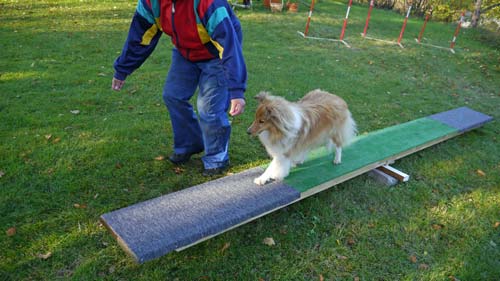
Agility seesaw. Initially, we have set the seesaw so low that no support legs below the balance point are needed
Initially, we set the seesaw very low, to get Lava used to the board tipping over by its own weight. This has been successful and she now likes the obstacle. Towards the end of autumn we gradually raised the obstacle, which has gone well.
One difficulty we have not yet faced with Lava is that on real tracks, the seesaw will smash down against a hard surface with a loud bang. Since we have our swing on the lawn, a stone or similar is needed in the impact point of the seesaw to imitate how it would be on a real track.
Length jump
The last obstacle I built for the agility track in the autumn of 2014 was the long jump. After the previous obstacles this was rude. The long jump consists of a few low horizontal transverse boards that slope slightly upwards. They should be placed at a small distance between the boards, and the length of the jump varies mainly with the number of boards.
Since we had bought trall timber for the long jump in the summer, we just had to saw and screw it together. If you have an obstacle description, which you are understood to have already obtained if you want to build an agility course, no further description is needed. So far I have built three boards, which is possibly enough for the Lava size class. If needed, it is easy to build another board. This is what the obstacle looks like:
Tunnel
In addition to the obstacles described above, we have another obstacle, which I did not build myself. It is a tunnel, which we bought from an online store. The tunnel is unfortunately made of a thin and crunchy synthetic fabric, but did not cost much either.
In the same way as in the basic course, Lava had initially difficulty with the tunnel. It rustles when she walks in it, and yet more in windy conditions. So we could get her through the tunnel, but sometimes she preferred to stay outside.
But this was just a training issue. I noticed when I trained with Lava at home, using a pretty heavy bedspread that she had to crawl through, that if I put it in a doorway and ran around the apartment and through the doorway so Lava only had one way through, this suddenly became fun for her too. On Tynningö we arranged the tunnel at the corner of our house so we ran around the house and had to pass through the tunnel at the corner, then it suddenly became fun for her. After a few more such laps, she had got over her aversion to the crackling fabric and now gladly runs through the tunnel.
The finished agility track
With all these obstacles in place, the autumn had already come a long way, and there was not much time left for training. But we still managed to do a few training laps.
One problem I did not anticipate was how much space the obstacles would take up. The longest obstacle is the balance boom and it is almost twelve meters long, and between each obstacle you should have at least four meters. So our large lawn turned out not to be that big, and we are forced to take other parts of the site in use for the track, which also entails level differences. But maybe that just makes the course more fun?
As I write this Christmas weekend 2014, the obstacles have been picked up and set in the basement for the winter. But when spring comes, it's just to pick them out again and hopefully also get many fun training hours. Possibly I will then too supplement the track with the agility A-barrier.
Sheltie get-together (Jan 4 2015)
At the end of 2014, we received an invitation via a Facebook group to a sheltie meeting at the Kevlinge golf course. The meeting was announced for Jan 4 2015 at noon. We had been looking for activities for dogs at times when we had the opportunity to participate, but this was the first time it did not collide with other activities. So we immediately accepted this invitation.
By metro we easily got to Mörby Centrum, and at the exit we met Lisa Lindgren who had invited to the meeting. A five minute walk took us down to the entrance to the golf course, where a numerous crowd of people and shelties met.
The weather was great, with a few degrees below 0, sunny and quite calm. Because the temperature was below freezing, the ground was hard and dry. At wintertime temperatures above zero usually leads to a wet, soft and muddy ground. But this day, the golf course proved to be at its very best side, and it was very beautiful and pleasant to walk around there.
We were a little pensive about how Lava would react with so many dogs around her. She usually seem to prefer just one dog to play with. When there are several dogs she is often left out. And this meeting was attended by about 35 shelties accompanied by about 20 owners.
As expected, Lava seemed pending in front of this crowd of dogs. When any new dog owner arrived while we were waiting at the start, Lava immediately ran and welcomed the newcomer, both the dog and its owner. But in between, she mostly stayed with us. As the day progressed things went a little better, and sometimes she found friends for her favorite game - to rush around in large circles while hopefully someone chased her.
During the meeting we wandered to the other end of the golf course, where we had coffee on a sunny slope, with Edsviken looming between the trees here and there. Everyone had their own coffee, but Lisa offered very good cinnamon buns! Mums !
After coffee we strolled slowly back to the starting point, where the meeting ended.
It was a successful meeting in wonderful weather with beautiful surroundings - definitely a welcome change to the usual resting walk in Tanto, around Årstaviken or Långholmen. And a new meeting is already announced for the end of January. We will try to participate then too, though possibly, depending on the weather, we will then try to stretch our legs a little more before the meeting, for example start with a walk from Rödsjön and down to the start at the golf course.
Sheltie reunion Jan 25, 2015
The previous Sheltie meeting shortly after New Year 2015 was so appreciated that it prompted a new invitation, also this time on a Sunday. It did not collide with anything else this time either, so on January 25th we stood again at the golf course, which this time was covered with 10-15 cm of cuddly snow.
This time there were even more participants - maybe 45 people and probably even more shelties.
Most dogs love snow, and this is also true for Lava. The shyness from the previous meeting was away, and she immediately started hunting around with the other dogs. The wet snow soon formed to large snowballs hung in the fur of most shelties. This caused Lava to spend some time getting rid of them.
After some time we started a slow round walk on the golf course. Because most wanted to walk in the trampled tracks, we formed to a very long line of dog owners with dogs. Even under these conditions Lava followed us well, and she always stayed close to us without need for summons.
On a slope under some trees the snow was thinner, so there we had coffee. Lisa kindly treated coffee bread to everyone. We also took some group photos, before strolling back to the starting point.
I guess it was not the last sheltie meeting for Lava here. It really is a very nice variation to the usual walks, and it was obviously not just we who appreciated the meeting.
Three years with Lava (Mar 5 2017)
Lava has now passed her third birthday, and health is still fine.
However she vomits about once a week. It usually happens outdoors. When we see that she starts grazing grass - preferably couch grass - we know she wants to vomit, and this and usually she does just a short while later. Sometimes it can also happen that she vomits at home, and then we have to bring out the rag.
I do not know why this happens. But once she has vomited, she seems to be fine again. One theory I have is that she gets dog hair from her fur when she cares for it, and which she needs to get rid of. But that's just a theory, I do not know.
More rare - thank goodness! - is that in the middle of the night she starts whining and wants out. It can be around four o'clock in the morning, and in these cases, she is infallibly loose in the stomach, and is in a hurry to the nearest bush. We then use to give her gentle diet - at first only water with a tiny amount of sugar and salt in a mix we read about online, then well boiled rice with some mashed fish bun.
When this happens, we have sometimes also given her the same gentle diet that she was prescribed during her visit to the animal hospital at the age of one year. It can be ordered online, and is also a very popular candy for her if it is not used as regular food. With this treatment she has recovered in a couple of days, and it has been enough to go out at night just the first day.
Fortunately, these diarrhea have become increasingly rare, and it was probably about six months since the last time. And instead I want now tell us about all our positive experiences with Lava.
Dog owners live longer
At home, Lava sleeps a large part of the time when we devote ourselves to other things. The interaction with our dog instead consists largely of walks.
Of course, most of these are regular resting walks - usually a mere hour's walk two to three times a day. Lava shows no impatience to get out in the mornings, so if we want we can easily wait until eleven a.m. with the first rest, which then, on the other hand, may be a little longer. If we go out earlier in the morning, there may also be an afternoon walk, and of course the evening walk is mandatory.
These rest walks must be completed regardless of the weather. And - believe me - once you get out, it's nice, even in bad weather!
There are studies that show that dog owners live longer, and I am convinced that a large part of the explanation for this consists of that dog owners need these walks as much as their dogs!
Our hiking budy
For me, the biggest experience is the longer forest walks I usually do, and which are described in the hiking guide and the hiking reports . Usually I then travel with SL to one place and then walk to another, with lunch coffee, depending on the season also with bath and / or mushroom picking. In 2015, these walks became 950 km in total length, of which 43 hikes with a total of 680 km are described with pictures in the link above.
Lava always follows me faithfully on these hikes. There is normally no need to have her leashed. Sometimes deer appear which she then chases away from the path, but she does not run far, rarely out of sight, and does not usually move away from the path. Instead, she quickly returns to get her reward.
When resting for lunch and bath breaks, however, I have noticed that she gets a watchful behavior if she hear someone approaching, so nowadays I usually usually keep her leashed during longer breaks.
It happens that I walk in my own thoughts, and after about half an hour suddenly think about where Lava has gone. When I look back I do not see any dog, and starts calling her in. A small push on the leg is usually the answer, then she is standing right next to me on a different side than I was looking. So far it has never happened that she got away or was far away.
Lava is my faithful hiking companion, and I really appreciate her company. Below I show a small selection of pictures from the hikes during these three years, all of which are beautiful memories for me. Significantly more can be found under the section The Outdoor Page.
Our middle age doggie (May 8 2020)
During the forest walks with Lava, I have so far worn out three pairs of hiking boots and at least one pair of rubber boots. We have hiked many thousand km, maybe closer to 10,000. Almost all of this has taken place in the woodland around Stockholm. Besides this we have done a countless number of shorter resting walks in the neighbourhood.
Of course, we can not predict how long our dog will live. But for the breed Shetland Sheepdog it is reasonable to believe that she may become around fourteen years, unless she suffers accidents or serious illnesses before then.
Lava may thus now be more than halfway through her life. Almost eight glorious years have passed, both for her and for us as owners. As far as we know she is still healthy, and in our opinion is a very nice and affectionate dog. There have been no incidents since the last post, and it has been rather quiet also concerining everyday problems.
Here follows a half-lifetime status report for our dog.
Dog health and care
Stomach problems, which Lava has suffered of from and to, have not been prominent in recent times. Occasionally she vomits. Possibly this vomiting is caused by she gets dog hair when she takes care of her fur. But she is a food-loving dog, and on every walk she is on the lookout for something edible. And she's really good at finding something to chew on. For example, when we walked on Tynningö recently, she suddenly ran out into a meadow with tall grass, swirling around a little before the nose dived into the ground and came up with some slices of cheese in the gap.
As we rarely know what she is eating outdoors, it is very possible that the vomitting is caused by this.
We believe her weight is ok, and we try to regulate the weight by adjusting the food in proportion to her hull. But we are not sure if her weight is optimal.
Lava has been vaccinated annually. The last spring, however, we did not receive the usual call from the vet, perhaps due to the corona pandemic. We took an own iniative and visited the vet last autumn, so that problem has now been solved.
We have continued to brush her teeth with an electric toothbrush (Oral b) every morning. I do not know how to recognize tartar, but hope her teeth and gums are well. Her breath feels ok.
We can also not see that she has suffered from any joint problems so far, nor do we know of any other ailments.
The claw haircut we carried out every two weeks has earlier been without problems. But about six months ago, Lava started to hassle when we tried to cut her claws for unknown reason. We still manage to cut the claws on her hind paws, though on the front paws we have been forced to start using a foot file instead. She does not like that either, but at least tolerates it with a little hassle. This feels like something we do not really understand.
Update Feb 7, 2021: The problems with claw cuttings have disappeared. It's still not something Lava appreciates, but now we can easily cut all the claws again. We purchased a new claw clipper, but are unsure if this made the difference.
Fur care is not something we have spent much time on, but her fur is brushed a little now and then. Every now and then there might also appear tangles, that we cut away. We may also trim the fur around her paws. Sometimes she also gets a little ointment on her paws when they feel dry. Once or twice a year she releases undercoat, and then we usually try to speed this up by cleaning away as much as possible by hand or with a brush.
Other behaviours
Meetings with other people are usually hassle-free. She does not care about bicycles, but when it comes to joggers she is not completely reliable. Most often she ignores them, but sometimes she seems to perceive them as a threat and can then go out and scold them. We therefore leave room for the joggers. Sometimes, however, the joggers surprise us as well, especially if they come quietly from behind, and then it can be trickier. However, it was quite a long time since we experienced any problem with joggers.
It's worse with skateboards and roller skiers. She barks at these without exception. Fortunately, these are heard in the distance, so we are mostly prepared and make sure she can not go out against them. She has also scolded electric scooters, but it seems that she now begins to get used to them.
Out in the woods, she can sometimes give a warning when others approach, but mostly not. But at breaks in the woods where it is otherwise quiet she almost always gives a warning call when she hears others approaching. Lava has much better developed senses for what is happening around her in the forest, so we are almost always aware of both animals and humans by observing Lava, long before we ourselves can sense their existence.
Lava behaves very well when walking in the forest, and always stays in our immediate vicinity. If she notices deer or a hares in her environment, she usually runs a few tens of meters and barks, but when they leave, she is in a hurry to get back a piece of candy as a reward. I have never understood if it is best to reward rather than punishing in such situations, but the reward method has at least made us feel free to encounter wildlife.
Overall, everything is thus very good so far, but the knowledge that the dog years go very fast is there.
